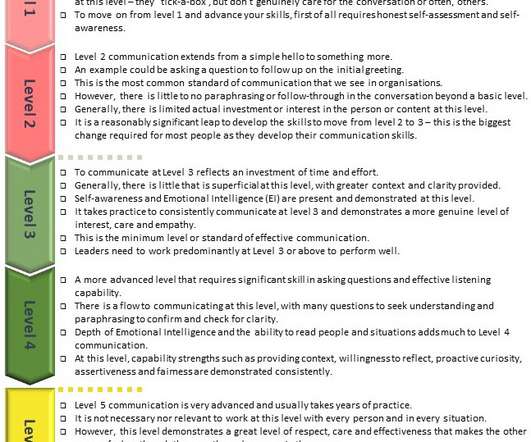8 Ways To Design a High-Trust Culture
Leading Blog
NOVEMBER 20, 2017
Paul Zak, the author of The Trust Factor , has shown that “when someone is tangibly trusted by a stranger, the brain synthesizes the signaling chemical oxytocin” and “ the more trust one is shown, the more the brain produces oxytocin.” High levels of stress and testosterone inhibit the release of oxytocin. T RUST BEGETS TRUST.













Let's personalize your content